Designing Scalable OSPF Design
The ability to scale an OSPF internetwork depends on the overall network structure and addressing scheme. As outlined in the preceding sections about network topology and route summarization, adopting a hierarchical addressing environment and a structured address assignment are the most important factors in determining the scalability of your internetwork. Network scalability is affected by operational and technical considerations.
This section discusses designing advanced routing solutions using OSPF. It describes how to obtain scale OSPF designs and what factors can influence convergence in OSPF on a large network. The concepts covered are
- How to scale OSPF routing to a large network
- How to obtain fast convergence for OSPF in a routing design
Factors Influencing OSPF Scalability
Scaling is determined by the utilization of three router resources: memory, CPU, and interface bandwidth. The workload that OSPF imposes on a router depends on these factors:
- Number of adjacent neighbors for any one router: OSPF floods all link-state changes to all routers in an area. Routers with many neighbors have the most work to do when link-state changes occur. In general, any one router should have no more than 60 neighbors.
- Number of adjacent routers in an area: OSPF uses a CPU-intensive algorithm. The number of calculations that must be performed given n link-state packets is proportional to n log n. As a result, the larger and more unstable the area, the greater the likelihood for performance problems associated with routing protocol recalculation. Generally, an area should have no more than 50 routers. Areas that suffer with unstable links should be smaller.
- Number of areas supported by any one router: A router must run the link-state algorithm for each link-state change that occurs for every area in which the router resides. Every ABR is in at least two areas (the backbone and one adjacent area). In general, to maximize stability, one router should not be in more than three areas.
- Designated router (DR) selection: In general, the DR and backup designated router (BDR) on a multiaccess link (for example, Ethernet) have the most OSPF work to do. It is a good idea to select routers that are not already heavily loaded with CPU-intensive activities to be the DR and BDR. In addition, it is generally not a good idea to select the same router to be the DR on many multiaccess links simultaneously.
The first and most important decision when designing an OSPF network is to determine which routers and links are to be included in the backbone area and which are to be included in each adjacent area.
Number of Adjacent Neighbors and DRs
One contribution to the OSPF workload on a router is the number of OSPF adjacent routers that it needs to communicate with.
Each OSPF adjacency represents another router whose resources are expended to support these activities:
- Exchanging hellos
- Synchronizing link-state databases
- Reliably flooding LSA changes
- Advertising the router and network LSA
Some design choices can reduce the impact of the OSPF adjacencies. Here are some recommendations:
- On LAN media, choose the most powerful routers or the router with the lightest load as the DR candidates. Set the priority of other routers to zero so they will not be DR candidates.
- When there are many branch or remote routers, spread the workload over enough peers. Practical experience suggests that IPsec VPN peers, for example, running OSPF over GRE tunnels are less stable than non-VPN peers. Volatility or amount of change and other workload need to be considered when determining how many peers a central hub router can support.
Any lab testing needs to consider typical operating conditions. Simultaneous restarts on all peers or flapping connections to all peers are the worst-case situations for OSPF.
Routing Information in the Area and Domain
The workload also depends on the amount of routing information available within the area and the OSPF autonomous system. Routing information in OSPF depends on the number of routers and links to adjacent routers in an area.
There are techniques and tools to reduce this information. Stub and totally stubby areas import less information into an area about destinations outside the routing domain or the area then do normal areas. Therefore, using stub and totally stubby areas further reduces the workload on an OSPF router.
Interarea routes and costs are advertised into an area by each ABR. Totally stubby areas keep not only external routes but also this interarea information from having to be flooded into and within an area.
One way to think about Autonomous System Boundary Routers (ASBR) in OSPF is that each is in effect providing a distance vector-like list of destinations and costs. The more external prefixes and the more ASBRs there are, the more the workload for Type 5 or 7 LSAs. Stub areas keep all this information from having to be flooded within an area.
The conclusion is that area size and layout design, area types, route types, redistribution, and summarization all affect the size of the LSA database in an area.
Designing OSPF Areas
Area design can be used to reduce routing information in an area. Area design requires considering your network topology and addressing. Ideally, the network topology and addressing should be designed initially with division of areas in mind. Whereas EIGRP will tolerate more arbitrary network topologies, OSPF requires a cleaner hierarchy with a more clear backbone and area topology.
Geographic and functional boundaries should be considered in determining OSPF area placement.
As discussed previously, to improve performance minimize the routing information advertised into and out of areas. Bear in mind that anything in the LSA database must be propagated to all routers within the area. With OSPF, note that all changes to the LSA database need to be propagated; this in turn consumes bandwidth and CPU for links and routers within the area. Rapid changes or flapping only exacerbate this effect because the routers have to repeatedly propagate changes. Stub areas, totally stubby areas, and summary routes not only reduce the size of the LSA database, but they also insulate the area from external changes.
Experience shows that you should be conservative about adding routers to the backbone area 0. The first time people configure an OSPF design, they end up with almost everything in area 0. Some organizations find that over time, too many routers ended up in area 0. A recommended practice is to put only the essential backbone and ABRs into area 0.
Some general advice about OSPF design is this:
- Keep it simple.
- Make nonbackbone areas stub areas (or totally stubby areas).
- Have the address space compressible.
Area Size: How Many Routers in an Area?
Cisco experience suggests that the number of adjacent neighbors has more impact than the total number of routers in the area. In addition, the biggest consideration is the amount of information that has to be flooded within the area. Therefore, one network might have, for example, 200 WAN routers with one Fast Ethernet subnet in one area. Another might have fewer routers and more subnets.
It is a good idea to keep the OSPF router LSAs under the IP maximum transmission unit (MTU) size. When the MTU is exceeded, the result is IP fragmentation. IP fragmentation is, at best, a less-efficient way to transmit information and requires extra router processing. A large number of router LSAs also implies that there are many interfaces (and perhaps neighbors). This is an indirect indication that the area may have become too large. If the MTU size is exceeded, the command ip ospf mtu ignore must be used.
Stability and redundancy are the most important criteria for the backbone. Stability is increased by keeping the size of the backbone reasonable.
If link quality is high and the number of routes is small, the number of routers can be increased. Redundancy is important in the backbone to prevent partition when a link fails. Good backbones are designed so that no that single link failure can cause a partition.
Current ISP experience and Cisco testing suggest that it is unwise to have more than about 300 routers in OSPF backbone area 0, depending on all the other complexity factors that have been discussed. As mentioned in the preceding note, 50 or fewer routers is the most optimal design.
OSPF Hierarchy
OSPF requires two levels of hierarchy in your network, as shown in Figure 3-13.
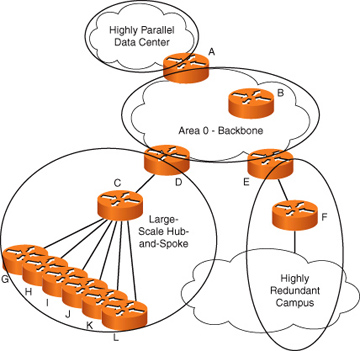
Figure 3-13 OSPF Hierarchy
Route summarization is extremely desirable for a reliable and scalable OSPF network. Summarization in OSPF naturally fits at area boundaries, when there is a backbone area 0 and areas off the backbone, with one or a few routers interconnecting the other areas to area 0. If you want three levels of hierarchy for a large network, BGP can be used to interconnect different OSPF routing domains. With advanced care, two OSPF processes can be used, although it is not recommended for most networks due to complexity and the chance of inadvertent adjacencies.
One difficult question in OSPF design is whether distribution or core routers should be ABRs. General design advice is to separate complexity from complexity and put complex parts of the network into separate areas. A part of the network might be considered complex when it has a lot of routing information, such as a full-mesh, a large hub-and-spoke, or a highly redundant topology such as a redundant campus or data center.
ABRs provide opportunities to support route summarization or create stub or totally stubby areas. A structured IP addressing scheme needs to align with the areas for effective route summarization. One of the simplest ways to allocate addresses in OSPF is to assign a separate network number for each area.
Stub areas cannot distinguish among ABRs for destinations external to the OSPF domain (redistributed routes). Unless the ABRs are geographically far apart, this should not matter. Totally stubby areas cannot distinguish one ABR from another, in terms of the best route to destinations outside the area. Unless the ABRs are geographically far apart, this should not matter.
Area and Domain Summarization
There are many ways to summarize routes in OSPF. The effectiveness of route summarization mechanisms depends on the addressing scheme. Summarization should be supported into and out of areas at the ABR or ASBR. To minimize route information inserted into the area, consider the following guidelines when planning your OSPF internetwork:
- Configure the network addressing scheme so that the range of subnets assigned within an area is contiguous.
- Create an address space that will split areas easily as the network grows. If possible, assign subnets according to simple octet boundaries.
- Plan ahead for the addition of new routers to the OSPF environment. Ensure that new routers are inserted appropriately as area, backbone, or border routers.
Figure 3-14 shows some of the ways to summarize routes and otherwise reduce LSA database size and flooding in OSPF.
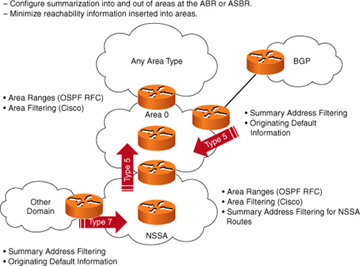
Figure 3-14 Area and Domain Summarization
- Area ranges per the OSPF RFCs: The ability to inject only a subset of routing information back into area 0. This takes place only an ABR. It consolidates and summarizes routes at an area boundary.
- Area filtering: Filters prefixes advertised in type 3 LSAs between areas of an ABR.
- Summary address filtering Used on an ASBR to filtering on routes injected into OSPF by redistribution from other protocols.
- Originating default.
- Filtering for NSSA routes.
OSPF Hub-and-Spoke Design
In an OSPF hub-and-spoke design, any change at one spoke site is passed up the link to the area hub and is then replicated to each of the other spoke sites. These actions can place a great burden on the hub router. Change flooding is the chief problem encountered in these designs.
Stub areas minimize the amount of information within the area. Totally stubby areas are better than stub areas in this regard. If a spoke site must redistribute routes into OSPF, make it a NSSA. Keep in mind that totally stubby NSSAs are also possible.
Limiting the number of spokes per area reduces the flooding at the hub. However, smaller areas allow for less summarization into the backbone. Each spoke requires either a separate interface or a subinterface on the hub router.
Number of Areas in an OSPF Hub-and-Spoke Design
For a hub-and-spoke topology, the number of areas and the number of sites per area need to be determined, as shown in Figure 3-15.
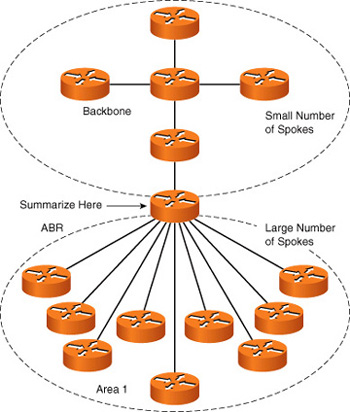
Figure 3-15 Number of Areas in a Hub-and-Spoke Design
As the number of remote sites goes up, you have to start breaking the network into multiple areas. As already noted, the number of routers per area depends on a couple of factors. If the number of remote sites is low, you can place the hub and its spokes within an area. If there are multiple remote sites, you can make the hub an ABR and split off the spokes in one or more areas.
In general, the hub should be an ABR, to allow each area to be summarized into the other areas.
The backbone area is extremely important in OSPF. The best approach is to design OSPF to have a small and highly stable area 0. For example, some large Frame Relay or ATM designs have had an area 0 consisting of just the ABRs, all within a couple of racks.
Issues with Hub-and-Spoke Design
Low-speed links and large numbers of spoke sites are the worst issues for hub-and-spoke design, as illustrated in Figure 3-16.
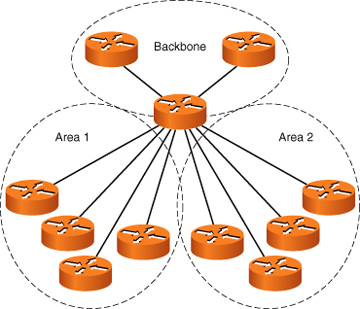
Figure 3-16 Issues with Hub-and-Spoke Design
Low-speed links and large numbers of spokes may require multiple flooding domains or areas, which you must effectively support. You should balance the number of flooding domains on the hub against the number of spokes in each flooding domain. The link speeds and the amount of information being passed through the network determine the right balance.
Design for these situations must balance
- The number of areas
- The router impact of maintaining an LSA database and doing Dijkstra calculations per area
- The number of remote routers in each area
In situations with low bandwidth, the lack of bandwidth to flood LSAs when changes are occurring or OSPF is initializing becomes a driving factor. The number of routers per area must be strictly limited so that the bandwidth is adequate for LSA flooding under stress conditions (for example, simultaneous router startup or linkup conditions).
The extreme case of low-bandwidth links might be 9600-bps links. Areas for a network would consist of, at most, a couple of sites. In this case, another approach to routing might be appropriate. For example, use static routes from the hub out to the spokes, with default routes back to the hub. Flooding reduction, as discussed in the "OSPF Flooding Reduction" section later in this chapter, might help but would not improve bandwidth usage in a worst-case situation. The recommendation for this type of setting is lab testing under worst-case conditions to define the bandwidth requirements.
OSPF Hub-and-Spoke Network Types
When using OSPF for hub-and-spoke networks, over nonbroadcast multiaccess access (that is, Frame Relay or ATM), you have several choices for the type of network you use. Figure 3-17 shows the details.
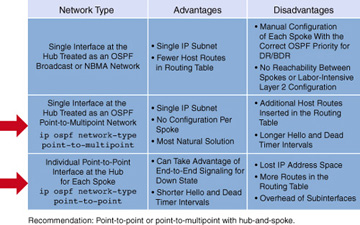
Figure 3-17 OSPF Hub-and-Spoke Network Types
You must use the right combination of network types for OSPF hub and spoke to work well. Generally, it is wisest to use either the point-to-multipoint OSPF network type at the hub site or configure the hub site with point-to-point subinterfaces.
Configuring point-to-multipoint is simple. The disadvantage of a point-to-multipoint design is that additional host routes are added to the routing table, and the default OPSF hello and dead-timer interval is longer. However, point-to-multipoint implementations simplify configuration as compared to broadcast or nonbroadcast multiaccess (NBMA) implementations and conserve IP address space as compared to point-to-point implementations.
Configuring point-to-point subinterfaces initially takes more work, perhaps on the order of a few hours. Each subinterface adds a route to the routing table, making this option about equal to point-to-multipoint in terms of routing table impact. More address space gets used up, even with /30 or /31 subnetting for the point-to-point links. On the other hand, after configuration, point-to-point subinterfaces may provide the most stability, with everything including management working well in this environment.
The broadcast or NBMA network types are best avoided. Although they can be made to work with some configuration effort, they lead to less stable networks or networks where certain failure modes have odd consequences.
OSPF Area Border Connection Behavior
OSPF has strict rules for routing. They sometimes cause nonintuitive traffic patterns.
In Figure 3-18, dual-homed connections in hub-and-spoke networks illustrate a design challenge in OSPF, where connections are parallel to an area border. Traffic crossing the backbone must get into an area by the shortest path and then stay in that area.
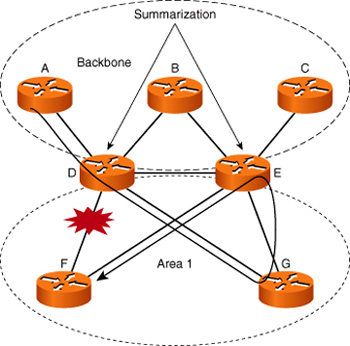
Figure 3-18 OSPF Area Border Connection Behavior
In this example, the link from D to E is in area 0. If the D-to-F link fails, traffic from D to F goes from D to G to E to F. Because D is an ABR for area 1, the traffic to F is all internal to area 1 and must remain in area 1. OSPF does not support traffic going from D to E and then to F because the D-to-E link is in area 0, not in area 1. A similar scenario applies for traffic from A to F: It must get into area 1 by the shortest path through D and then stay in area 1.
In OSPF, traffic from area 1 to area 1 must stay in area 1 unless area 1 is partitioned, in which case the backbone area 0 can be used. Traffic from area 1 to area 2 must go from area 1 to area 0, and then into area 2. It cannot go into and out of any of the areas in other sequences.
OSPF area border connections must be considered in a thorough OSPF design. One solution to the odd transit situation just discussed is to connect ABRs with physical or virtual links for each area that both ABRs belong to. You can connect the ABRs within each area by either of two means:
- Adding a real link between the ABRs inside area 1
- Adding a virtual link between the ABRs inside area 0
In general, the recommendation is to avoid virtual links when you have a good alternative. OSPF virtual links depend on area robustness and therefore are less reliable than a physical link. Virtual links add complexity and fragility; if an area has a problem, the virtual link through the area has a problem. Also, if you rely too much on virtual links, you can end up with a maze of virtual links and possibly miss some virtual connections.
If the ABRs are Layer 3 switches or have some form of Ethernet connections, VLANs can be used to provide connections within each area common to both ABRs. With multiple logical links, whether physical, subinterfaces, or VLANs between a pair of ABRs, the following options are recommended:
- Consider making sure that a link exists between the ABRs within each area on those ABRs.
- Implement one physical or logical link per area.
Fast Convergence in OSPF
Network convergence is the time that is needed for the network to respond to events. It is the time that it takes for traffic to be rerouted onto an alternative path when node or link fails or onto a more optimal path when a new link or node appears. Traffic is not rerouted until the data plane data structures such as the Forwarding Information Base (FIB) and adjacency tables of all devices have been adjusted to reflect the new state of the network. For that to occur, all network devices must go through the following procedure:
- Detect the event: Loss or addition of a link or neighbor needs to be detected. This can be done through a combination of Layer 1, Layer 2, and Layer 3 detection mechanisms, such as carrier detection, routing protocol hello timers, and Bidirectional Forwarding Detection (BFD).
- Propagate the event: Routing protocol update mechanisms are used to forward the information about the topology change from neighbor to neighbor.
- Process the event: The information needs to be entered into the appropriate routing protocol data structures and the routing algorithm needs to be invoked to calculate updated best paths for the new topology.
- Update forwarding data structures: The results of the routing algorithm calculations need to be entered into the data plane packet forwarding data structures.
At this point, the network has converged. The rest of this section focuses on the second and third steps in this procedure, because these are most specific to OSPF and tuning the associated parameters can greatly improve OSPF convergence times. The first step is dependent on the type of failure and the combination of Layer 1, Layer 2, and Layer 3 protocols that are deployed. The fourth step is not routing protocol specific, but depends on the hardware platform and the mechanisms involved in programming the data plane data structures.
Tuning OSPF Parameters
By default, OSPF LSA propagation is controlled by three parameters:
- OSPF_LSA_DELAY_INTERVAL: Controls the length of time that the router should wait before generating a type 1 router LSA or type 2 network LSA. By default, this parameter is set at 500 ms.
- MinLSInterval: Defines the minimum time between distinct originations of any particular LSA. The value of MinLSInterval is set to 5 seconds. This value is defined in appendix B of RFC 2328.
- MinLSArrival: The minimum time that must elapse between reception of new LSA instances during flooding for any particular LSA. LSA instances received at higher frequencies are discarded. The value of MinLSArrival is set to 1 second. This value is defined in Appendix B of RFC 2328.
OSPF Exponential Backoff
The default OSPF LSA propagation timers are quite conservative. Lowering the values of the timers that control OSPF LSA generation can significantly improve OSPF convergence times. However, if the value for the timeout between the generation of successive iterations of an LSA is a fixed value, lowering the values could also lead to excessive LSA flooding.
This is why Cisco has implemented an exponential backoff algorithm for LSA generation. The initial backoff timers are low, but if successive events are generated for the same LSA, the backoff timers increase. Three configurable timers control the LSA pacing:
- LSA-Start: The initial delay to generate an LSA. This timer can be set at a very low value, such as 1 ms or even 0 ms. Setting this timer to a low value helps improve convergence because initial LSAs for new events are sent as quickly as possible.
- LSA-Hold: The minimum time to elapse before flooding an updated instance of an LSA. This value is used as an incremental value. Initially, the hold time between successive LSAs is set to be equal to this configured value. Each time a new version of an LSA is generated the hold time between LSAs is doubled, until the LSA-Max-Wait value is reached, at which point that value is used until the network stabilizes.
- LSA-Max-Wait: The maximum time that can elapse before flooding an updated instance of an LSA. Once the exponential backoff algorithm reaches this value, it stops increasing the hold time and uses the LSA-Max-Wait timer as a fixed interval between newly generated LSAs.
What the optimal values for these values depends on the network. Tuning the timers too aggressively could result in excessive CPU load during network reconvergence, especially when the network is unstable for a period. Lower the values gradually from their defaults and observe router behavior to determine what the optimal values are for your network.
When you adjust the OSPF LSA throttling timers, it might be necessary to adjust the MinLSArrival timer. Any LSAs that are received at a higher frequency than the value of this timer are discarded. To prevent routers from dropping valid LSAs, make sure that the MinLSArrival is configured to be lower or equal to the LSA-Hold timer.
Figure 3-19 illustrates the OSPF exponential backoff algorithm. It is assumed that, every second, an event happens that causes a new version of an LSA to be generated. With the default timers, the initial LSA is generated after 500 ms. After that, a five-second wait occurs between successive LSAs.
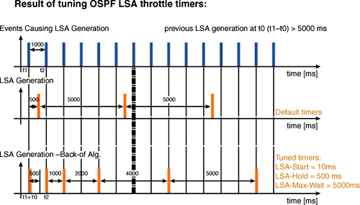
Figure 3-19 Tuning OSPF LSA Throttle Timers
With the OSPF LSA throttle timers set at 10 ms for LSA-Start, 500 ms for LSA-Hold, and 5000 ms for LSA-Max-Wait, the initial LSA is generated after 10 ms. The next LSA is generated after the LSA-Hold time of 500 ms. The next LSA is generated after 2 x 500 = 1000 ms. The next LSA is generated after 4 x 500 = 2000 ms. The next LSA is generated after 8 x 500 = 4000 ms. The next one would be generated after 16 x 500 = 8000 ms, but because the LSA-Max-Wait is set at 5000 ms, the LSA is generated after 5000 ms. From this point onward, a 5000 ms wait is applied to successive LSAs, until the network stabilizes and the timers are reset.
OSPF LSA Pacing
The LSA throttle timers control LSA generation by the originating routers. Another set of timers, the LSA pacing timers, controls the time it takes to propagate LSAs from router to router. By default, a router waits 33 ms between transmission of successive LSAs in the LSA flooding queue. There is a separate queue for LSA retransmissions, and LSAs in this queue are paced at 66 ms by default. If you adjust the LSA throttle timers to be low, you may also want to adjust these timers, because the total time for an LSA to propagate through the network is the initial LSA generation time plus the sum of the propagation delays between all routers in the path.
The intent of this timer is to ensure that you do not overwhelm neighboring routers with LSAs that cannot be processed quickly enough. However, with the increase of processing power on routers over the last decades this is not a major concern any more.
OSPF Event Processing
The LSA throttling and pacing timers control OSPF LSA propagation. The next element in OSPF convergence is event processing. The timing of successive OSPF SPF calculations is throttled in the same manner as LSA generation, using an exponential backoff algorithm.
The timers involved in OSPF SPF throttling are very similar to the LSA throttling timers. There are three tunable timers:
- SPF-Start: The initial delay to schedule an SFP calculation after a change.
- SPF-Hold: The minimum holdtime between two consecutive SPF calculations. Similar to the LSA-Hold timer, this timer is used as an incremental value in an exponential backoff algorithm.
- SPF-Max-Wait: The maximum wait time between two consecutive SPF calculations.
Considerations in adjusting these timers are similar to the LSA throttling timers. An additional factor to consider is the time it takes for an SPF calculation to complete on the router platform used. You cannot schedule a new SPF run before the previous calculation has completed. Therefore, ensure that the SPF-Hold timer is higher than the time it takes to run a complete SPF. When estimating SPF run times, you should account for future network growth.
Bidirectional Forwarding Detection
Bidirectional Forwarding Detection (BFD) is another feature that helps speed up routing convergence. One of the significant factors in routing convergence is the detection of link or node failure. In the case of link failures, there is usually an electrical signal or keepalive to detect the loss of the link. BFD is a technology that uses efficient fast Layer 2 link hellos to detect failed or one-way links, which is generally what fast routing hellos detect.
BFD requires routing-protocol support. BFD is available for OSPF, EIGRP, IS-IS, and BGP. BFD quickly notifies the routing protocol of link-down conditions. This can provide failure detection and response times down to around 50 ms, which is the typical SONET failure response time.
The CPU impact of BFD is less than that of fast hellos. This is because some of the processing is shifted to the data plane rather than the control plane. On nondistributed platforms, Cisco testing has shown a minor, 2 percent CPU increase above baseline when supporting 100 concurrent BFD sessions.
BFD provides a method for network administrators to configure subsecond Layer 2 failure detection between adjacent network nodes. Furthermore, administrators can configure their routing protocols to respond to BFD notifications and begin Layer 3 route convergence almost immediately.